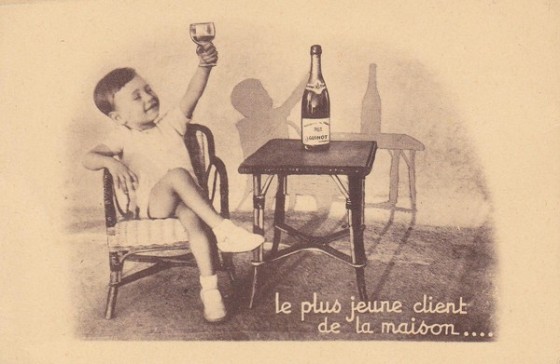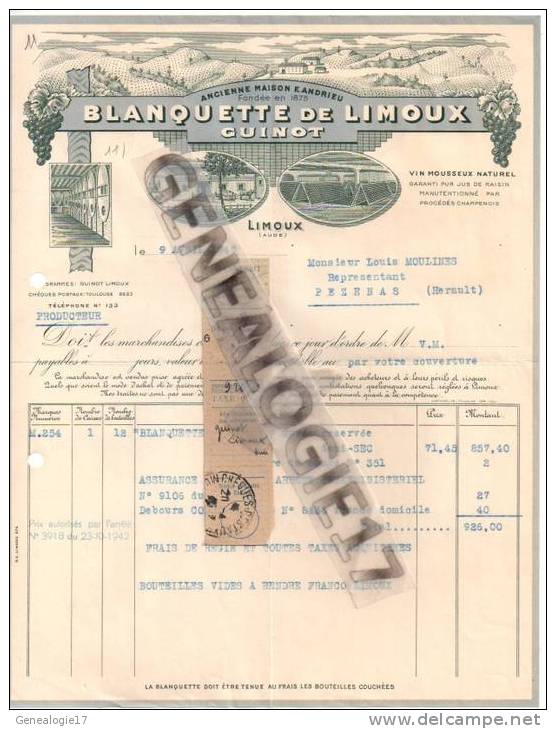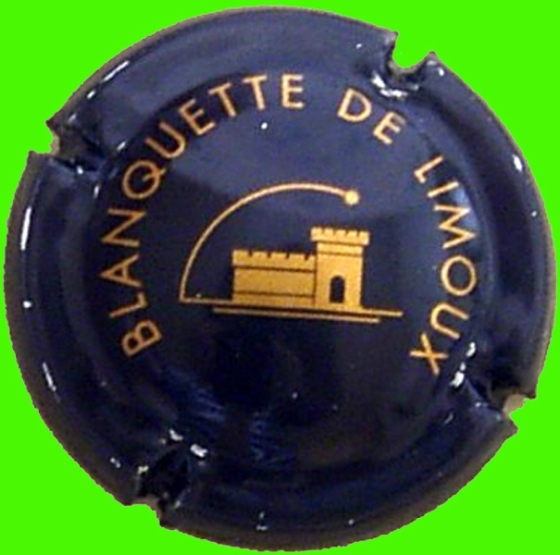« Do bubbles have a flavor ? Better to ask whether angels are male or female ? »
- Pierre Casamayor, L'Ecole de Degustation
by Paige Donner
The historical regions in France that have produced effervescent wines for several centuries are not limited to Champagne. Several regions pre-date that famous appellation's « discovery » of bubbly by a full century – notably Limoux, in the south of France, just north of Carcassonne and Narbonne. The other two historical regions of bubbly are Die and Gaillac, both also southerly.
For our purposes here, I will concentrate on the appellation of Limoux and use for illustration the illustrious Maison Guinot, whose sparkling wine took home the gold medal at the Exposition Universelle de Paris in 1889 during the inauguration of the Eiffel Tower.
Historical Background
It was in 1531 at the Abbey of St. Hilaire where the Mauzac grape was cultivated and first used to make a sparkling wine, known still today as Blanquette de Limoux. That was a full century before the dawn of champagne when the northerly region was still producing « still wines » from their Pinot Noir. Hence the Blanquette de Limoux carries the distinction of the « oldest Brut in the world » and its characteristic ripe apple notes, a gift of the Mauzac grape, make it instantly recognizable even when it is blended, as it is today, with poroportioned quantities of Chenin or Chardonnay.
Building on top of their 19c. success, the Maison Guinot responded to Tsar Nicolas II of Russia's interest in their wines by producing for him the very first Crémant de Limoux in 1913 : L'Imperial Guinot. You can find this cuvée still referenced today in Parker's guide to French wines and also in the Guide Hachette. The main difference between the Blanquette de Limoux and the Crémant de Limoux is, of course, the variety of grapes used for the blending. Crémant uses Chenin and Chardonnay today. Though Chardonnay was only authorized into AOC Limoux in '92. Blanquette uses Mauzac primarily though most houses today blend with either of the other two varieties, Chenin or Chardonnay. It's good to remember, as well, that champagne, at the turn of the last century, would have resembled something more like a Prosecco. Back then the bubbly, which was not so famous at that time, was blended for a palate seeking sweeter tastes. It's also worth noting that today's Loire Valley sparkling wines are often produced from the Chenin Blanc grape.
Limoux Terroir
So what is particular about this south of France terroir surrounding Limoux and the St. Hilaire Abbey that allows for superlative cultivation of not only the Mauzac and Chenin grapes, but also some of the country's best Chardonnay as well ? For this I will lean heavily on Pierre Casamayor, the French wine expert, author and professor at the University of Toulouse, to explain the local terroir, paraphrased from a presentation given by him.
Limoux has four distinct terroirs. Situated between the Atlantic and the Mediterranean, the appellation's altitude and soils vary throughout. Winds can blow either easterly or westerly depending on the weather patterns.
Mediterranean Terroir
These are the villages of St. Hilaire, Villebazy, Rouffiac, Pomas…The orientation is East/North-East. Altitudes average between 100m-200m and the Atlantic is what influences here, notably « le marin »which is an easterly wind. Very low rainfall, about 680mm per year. Here olive trees and green oaks share the vineyards' landscape. The grapes the vines yield are lower in acidity and show a quick and early ripening. The Chardonnays here are warmer and show little resemblance to their northern cousins.
Autan Terroir
Warm and dry are the watchwords for this area immediately surrounding the town of Limoux, in the lower part of the Aude Valley. Villages here are Rouffiac-d'Aude, Cépie, Alet-les-Bains and are somewhat protected from the winds at their 100-250m altitude. This area gets the lowest rainfall of all with only about 600mm per year.
The wines here appeal to a palate « a bit more delicate than the Mediterranean terroir ». Notes you'll find evident are tilleul and verveine, the Chards have vivacity. On the nose the wines offer scents of citrus, grapefruit, white flowers, jasmine, « lys » and spices.
Oceanic Terroir
These western villages of Loupia, Villelongue-d'Aube, Gaja-et-Villedieu and Pauligne are influenced by the Westerly winds and by the Atlantic weather patterns meaning rain and moisture. Rainfall is about 750mm per year with elevation at 200-300 m. No olives here just the green oaks. The grapes respond with a higher acidity, longer maturation.
The bouquet of these wines offer scents like cardamon, mineral, safran (spices), wild vanilla. The palate is harmonious, elegant, taut ; a good balance between power and vivacity/ freshness. A good home for the chards :« These Chardonnays can rival the best of them. »
Terroir of the Upper Valley
Roquetaillade, Bouriege, Festes and St. Andre are at the upper valley's 250 – 420 m elevations. Rainfall is the heaviest at 850mm per year on average. Temperatures are lower than down below and some of the local vintners describe this region as the « Burgundy of the South ». Characteristic of that nickname, you find microclimates here. Westerly winds are fresher and come later in Spring ; in the Fall they are cold and short. This is a terroir marked by the vintage year. The slower maturation of the raisins means that the flavors and « aromatic finesse » can develop and ripen slowly. Up here, not even green oaks grow.
The bouquet of these wines is fine and delicate and you can often detect a dominant floral-acacia note, even chevrefeuille, exotic fruits, light leather, tabacco. Palate appeals to tastes of austere elegance, « like muscles with no extra fat ». They often leave the taster with a bright finish and the desire to cellar for 2-5 years.
Harvest 2013 at Maison Guinot
Harvest this year, all done by hand as is the custom of the house, began on September 27th for the Mauzac. It usually lasts about 3 weeks according to Michel Guinot, who also confided that the Chardonnay harvest this year yielded « good quality, good aromatics, good acidity » when they harvested at 12-12.5%. Their Chenin Blanc came in at 11% alcohol and their Mauzacs at 10.5% at the beginning then 11.5% by the end of harvest.
The Maison Guinot has preserved that delicate balance between observing tradition and implementing modern adjustments. For example, they do their own blending and are their own « œnologues », Michel today and his father and grandfather before him. However the pressoir they use is automatic, the Wilmes, only one of two in France, the other being used by the house of Moët & Chandon. They turn 30K bottles by hand every day, using the now-established méthode Clicquot, or the riddling method first discovered by Madame « Veuve » Ponsardin Clicquot. For disgorgement they employ a process that can be considered unique these days, in that they do not freeze the neck of the bottle in order to dispel the accumulated sediment during the second fermentation ; Rather they use simply the built-up pressure of the carbonic gas to achieve the same results for their 180,000 bottle annual production.
Food Pairings
As we approach holiday season and colder weather in many parts of the globe, it will be a good and right thing to treat your palate to both a Blanquette de Limoux, its ripe apple flavors pairing so well with an oven-roasted turkey or chicken filled with a bacon-mushroom-chestnut stuffing. And for a fish or crestacean meal, as well as a citrus meringue tart or fruit-accented dessert, a Crémant de Limoux is quite nice.







